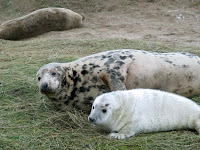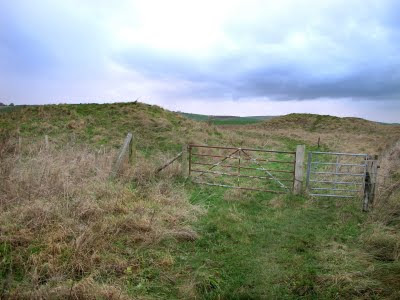
I found Wansdyke on the map and went to have a look, but never imagined the richness of pre-historic monuments to be found on a 3 mile walk on the Pewsey Downs. I started at the bottom of Knap Hill (above and below) a hilltop causewayed enclosure from about 5700 years ago (BP), where Stone Age folk would meet periodically to celebrate and renew tribal loyalties or deal with their dead.

Then comes Adam's Grave, a chambered tomb (long barrow) of about the same age on it's spectacular hilltop dominating the Vale of Pewsey (below)

A glimpse of Silbury Hill in the distance is unexpectedly through a gap in Wansdyke, made by a farmer to get his tractor through (or perhaps a horse and cart).

Wansdyke shocks. How much labour and determination did it take to dig out this massive snaking bank and ditch? It originally stretched from Savernake Forest near Marlborough deep into Somerset and maybe to the River Severn. One bet is that Ancient Britons built it in the 5th century AD (after the Romans left) to protect themselves from the invading Saxons, but nobody seems sure. If so it obviously didn't work. Perhaps like the Maginot line the enemy just walked around it! Alternatively it could have been to establish the boundary between two tribes.

Then it's onto Pewsey Down itself; magical moss green tentacles of chalk sliding down into the vale.

Across a valley is Rybury (or Rybury Camp), an Iron Age hill fort (5-700BC) built over another Neolithic causewayed enclosure, at least 5000years old, and there long before the first Egyptian pyramid was built at Djoser.

Met some nice friendly chaps - Welsh Blacks?

They gathered to watch two men mending the fence round Alton Barnes White Horse (cut in 1812 or thereabouts) . Perhaps the grass looked greener over the fence.

Back down towards the car, and the present, and Knap Hill had changed colour in the last of the evening light.




































